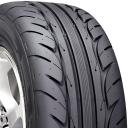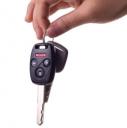March 23rd, 2011 by Hal Moses
 With summer traveling in full gear, Americans are trying to find ways to save at the gas pump. Ford has put together some easy tips for all motorists, which suggest ways to alter their driving behavior.
With summer traveling in full gear, Americans are trying to find ways to save at the gas pump. Ford has put together some easy tips for all motorists, which suggest ways to alter their driving behavior.
First of all, drivers should slow down and keep a steady speed. Consider driving 55 mph instead of 65 mph. Just by following this simple tip you can improve your fuel economy 10-15%. Also, by maintaining a constant speed and not pumping the accelerator you can avoid sending more gas to the engine.
Next, avoid aggressive driving to avoid wasting fuel. Also, this will help you avoid wearing out brakes and tires. Try to have a smooth acceleration and soft brake.
Don’t waste money idling. Even in frigid temperatures, engines today don’t need to warm up. After starting the vehicle, drive away gently. Instead of idling in traffic and fast food drive-thrus, just turn you engine off.
Finally, purchase an auto warranty so that you aren’t afraid to have maintenance and repairs performed. Maintaining your vehicle will ensure that it is running efficiently and has the best fuel economy possible.
March 22nd, 2011 by Hal Moses
 Most motorists have experienced the drowsy driving syndrome. Either you’ve been the driver yourself or you’ve been in the passenger seat. Many wrecks and road service calls can be avoided if drivers aren’t drowsy. Here are some signs to look for in a drowsy driver.
Most motorists have experienced the drowsy driving syndrome. Either you’ve been the driver yourself or you’ve been in the passenger seat. Many wrecks and road service calls can be avoided if drivers aren’t drowsy. Here are some signs to look for in a drowsy driver.
If the driver is weaving drowsiness may be setting in. The driver doesn’t perform as many steering corrections, which means that the ones made are more severe and jerky.
Often drivers become very quiet or rely on conversation to stay awake. Conversation often doesn’t make a lot of sense.
If the driver passes over rumble strips they need to pull over and take a rest. This could mean that they actually fell asleep for a second, or that they are so tired that they can’t stay on the road.
The neck jerk is always a tell tale sign. This is when the driver falls asleep for a moment and then their neck jerks and they wake up.
Never get on the road drowsy, and never get in a car with a drowsy driver. There have been many calls for emergency roadside assistance due to drowsy drivers. In addition, make sure your protect yourself with an auto warranty.
March 19th, 2011 by Hal Moses
 With everyone worried about the economy, there are numerous tips circulating about how to save money on fuel. A lot of this advice, however, isn’t worth the time of the average driver. So, which strategies are worth the time and which aren’t?
With everyone worried about the economy, there are numerous tips circulating about how to save money on fuel. A lot of this advice, however, isn’t worth the time of the average driver. So, which strategies are worth the time and which aren’t?
There are several things that you can do to significantly improve your fuel economy. It makes sense to drive slow and steady to improve gas mileage. If you travel at the speed limit and avoid accelerating rapidly you won’t burn as much gas. Also, you don’t want to let your car idle. Every second in which your engine is running while your car is stationary you are wasting gas. Also, keeping your tires inflated properly will allow you approximately a 10% improvement in fuel-efficiency.
There are also some tips that aren’t worth your time. First of all, don’t bother filling up when temperatures are cool. Although this theory is true, it won’t save you enough to be concerned with it. Next, lightening your load isn’t going to help you with fuel-efficiency very much unless you’re carrying 100 pounds of cargo in your car. Most people don’t carry enough stuff in their car to amount to much.
Consumers are becoming more and more concerned with saving money on their cars. To do this they are buying fuel-efficient cars with an auto warranty, and following tips to save on fuel. Motorists are feeling the pinch due to the poor economy.
March 18th, 2011 by Hal Moses
 Often, drivers who have a big SUV feel a false sense of security. People feel that just because they are in a large vehicle nothing can happen to them.
Often, drivers who have a big SUV feel a false sense of security. People feel that just because they are in a large vehicle nothing can happen to them.
Yet, the truth is that SUVs are much more likely to roll in an accident than other cars. And approximately 35% of fatalities in car accidents occur because of rolling. Also, it was recently discovered by the Insurance Institute for Highway Safety that the strength of a SUVs roof is directly correlated to the risk of injury to the occupants. In other words, if a vehicle’s roof is made stronger, it can reduce injuries.
The U.S. government currently requires cars to be able to withstand a force 1.5 times the car’s weight before it reaches 5 inches of crush. For safety reasons, the government would like to change that to 2.5 times the weight of the vehicle.
Drivers never know if they are going to be involved in a car accident. Drivers should protect themselves by buying a safe vehicle, having a good auto warranty, and taking safety precautions while driving.
March 17th, 2011 by Hal Moses
 Over the past few decades, perhaps one of the biggest technical developments has been to tires. And now, new rules concerning tires will yield even more mileage and safety improvements.
Over the past few decades, perhaps one of the biggest technical developments has been to tires. And now, new rules concerning tires will yield even more mileage and safety improvements.
After the estimated 280 deaths that were linked to Firestone tire failures on the Ford Explorer SUVs, lawmakers ordered tire pressure monitoring systems are used. These systems alert drivers if they have a tire with low air.
Thankfully, some of the recent monitoring systems don’t have problems that were experienced with the earlier technology. Problems included false alerts, and failure to advise drivers which of their tires was low.
Now, there is a national registry that has been approved, allowing drivers to register their tires that they purchase. In the case of a recall, such as Firestone, drivers would be notified quickly.
Drivers will be much safer with the new tire rules. However, drivers should always protect themselves by doing regular tire pressure checks and having an auto warranty in case of necessary repairs.
March 16th, 2011 by Hal Moses
 As the economy declines, more motorists are trying to save money by abandoning their car insurance.
As the economy declines, more motorists are trying to save money by abandoning their car insurance.
According to the Insurance Research Council, the uninsured rate and the unemployment rate are directly correlated. When unemployment increases 1%, uninsured drivers increase a half-percent. As of November, unemployment was up 2% since last year.
In a recent study, the council claims there have been several hundred thousand drivers that have let their insurance lapse, or dropped it in the last year.
What this means is that your odds of getting hit by a driver that is uninsured have gone up drastically, and usually people who are uninsured don’t have very many assets if you plan to sue for damages.
For people who have the funds, coverage for being hit by underinsured or uninsured drivers has become a necessary protection even though it raises your premium 7% to 9%. And, you don’t want to let your insurance lapse because you will be charged a 25% to 50% surcharge for a new policy. Also, drivers should protect themselves with a roadside assistance program and an auto warranty.
March 15th, 2011 by Hal Moses
 The riskiest time for car crashes are between midnight and six o’clock in the morning. This is because there are the fewest drivers at this time of day, yet more accidents. If you need to drive during these hours it is important to consider some important factors. Safe driving at night calls for preparation, alertness, as well as common sense. Here are some tips.
The riskiest time for car crashes are between midnight and six o’clock in the morning. This is because there are the fewest drivers at this time of day, yet more accidents. If you need to drive during these hours it is important to consider some important factors. Safe driving at night calls for preparation, alertness, as well as common sense. Here are some tips.
First of all, ensure that your headlights are aimed properly. You should consult your service manual to determine the proper procedure.
Next, don’t focus on the headlights of oncoming cars. This can blind you for five seconds until your eyes are able to adjust.
Don’t drive if you are feeling sleepy, instead pull off of the road and get some sleep. Don’t substitute caffeine, loud music, or putting down the windows for sleep. These tactics are unreliable and may result in an accident.
Finally, don’t allow yourself to stare at the centerline because it can cause “highway hypnosis,†in which your reaction time is impaired, instead, keep looking around and moving your eyes.
Follow these simple tips to keep yourself safe when driving at night. Just like you protect yourself with an auto warranty and roadside assistance, you should protect yourself with safe driving habits.
March 12th, 2011 by Hal Moses
 With the poor economy, drivers are trading in their big gas-guzzlers for fuel-efficient cars. Yet, while that makes sense, if you switch too soon you might be looking at more overall car costs than you’ll save on gas. According to Consumer Reports, downsizing is beneficial in the long run if you time it right.
With the poor economy, drivers are trading in their big gas-guzzlers for fuel-efficient cars. Yet, while that makes sense, if you switch too soon you might be looking at more overall car costs than you’ll save on gas. According to Consumer Reports, downsizing is beneficial in the long run if you time it right.
A study by Consumer Reports reveals that if you still owe on your car loan, it might not be beneficial to downsize after just three years. With a loan, initially your payments are made up of a large percentage of interest. Trading in too early will leave you with less equity, which will limit a down payment for a new car.
Another hurdle that affects the equity of your car is depreciation. In the first five years of ownership, depreciation makes up about 48% of total vehicle costs for the owner. On average, costs for fuel only equal about 21%. Within the first three years, depreciation is the greatest, and then it begins to level off.
So, trading in a 3-year old car will result in a whole new depreciation ride. However, if you have owned your vehicle for more than four years trading in makes more sense. Just make sure you have an auto warranty for peace of mind when keeping your vehicle for several years.
March 11th, 2011 by Hal Moses
 A new rating system for roof-strength has been launched by the Insurance Institute for Highway Safety, and has conducted its first tests on small SUVs. Unfortunately, only four out of the twelve vehicles tested managed to get a Good rating, which is the top rating.
A new rating system for roof-strength has been launched by the Insurance Institute for Highway Safety, and has conducted its first tests on small SUVs. Unfortunately, only four out of the twelve vehicles tested managed to get a Good rating, which is the top rating.
The SUVs that scored the Good rating were the Honda Element, Subaru Forester, Volkswagen Tiguan and the Jeep Patriot. SUVs that scored Acceptable were the Chevrolet Equinox, Suzuki Grand Vitara, Nissan Rogue, Toyota RAV4, and Mitsubishi Outlander. Ranking Marginal, were the Ford Escape, and Honda CR-V, while the Hyundai Tucson and Kia Sportage were the only vehicles to rate Poor.
This new standard for roof-strength is intended to combat rollover deaths, which account for about a quarter of all deaths having to do with traffic. For vehicles to be an IIHS Top Safety Pick, they have to now withstand four times their own weight before the car’s roof will collapse 5 inches. The IIHS’s strength to weight ratio is a much higher standard than the National Highway Traffic Safety Administration’s, which says that roofs should bear 2.5 times the car’s weight.
Consumers are becoming more and more concerned with vehicle safety, which is why more people are purchasing an auto warranty. With used car warranties, people can rest-assured that they won’t be paying unnecessary repair costs.
March 10th, 2011 by Hal Moses
 There are many great deals out there on new cars, yet you need to understand the offers. For example, are there any “restrictionsâ€, “qualifiersâ€, “exclusionsâ€, or “limitationsâ€? Make sure you know how to read the fine print.
There are many great deals out there on new cars, yet you need to understand the offers. For example, are there any “restrictionsâ€, “qualifiersâ€, “exclusionsâ€, or “limitationsâ€? Make sure you know how to read the fine print.
Often, dealerships offer incentives that are regional. In other words, you must live in the area to get the deal. You might be able to get a new car for $1,500 less if you live in the right area.
Some deals on financing may be contingent on a predetermined down payment amount. For example, you might need to have $4,000 cash to put down at the time of the sale. If you don’t have this amount of money, you might get stuck with finance rate that is higher.
Sometimes an offer may be contingent on if the dealer participates with the program. This could include a special financing rate, rebate, etc. Remember that dealers are operated independently and you are not dealing directly with the automaker.
These are just a few things to look out for when it comes to dealer offers. Make sure you read the small print to understand the terms of the offer. And make sure that the car you are looking at comes with a good auto warranty.
 With summer traveling in full gear, Americans are trying to find ways to save at the gas pump. Ford has put together some easy tips for all motorists, which suggest ways to alter their driving behavior.
With summer traveling in full gear, Americans are trying to find ways to save at the gas pump. Ford has put together some easy tips for all motorists, which suggest ways to alter their driving behavior.











